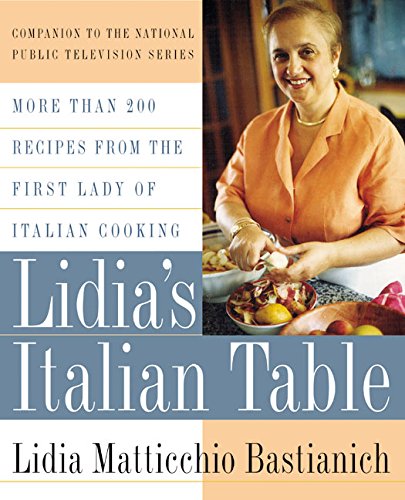4 quarts
Notes
I recall as a child that fat in brodo was actually sought after, especially if it came from the marrow of the bones. I would hear my family exclaim “o quanti oci ga sto brodo” in dialect or “Wow! Look at the eyes in this broth.” The eyes were the rounds of fat floating on the surface of the brodo. There are two way to go about making a meat stock: If you start cooking the bones in cold water and cook them four hours or so, you will have a stock that is rich in flavor because the liquid has extracted most of the flavor from the meat. If you would like to serve the meat used to make the stock as a meal, then start the stock with hot water and cook it a little less, which will leave more of the flavor in the meat. Broth made this way will be a little less rich, but still delicious and certainly flavorful enough to use in any of the recipes in this chapter. Charring the onion before adding it to the stock softens its flavor and cuts the acidity an onion will add to stock. It also adds complexity of flavor to the finished stock.
Ingredients
- 5 quarts water
- 1 pound beef short ribs
- 1 pound meaty veal shank
- 1 pound chicken necks, wings and backs
- 1 large onion (about ½ pound), cut in half
- 3 cups trimmed and sliced (1-inch) carrots
- 3 celery stalks cut crosswise into 4 pieces
- 6 garlic cloves
- 6 sprigs fresh Italian parsley
- 6 whole black peppercorns
- salt
Directions
Wash the beef, veal and chicken under cold running water and drain them well. Combine the water, beef, veal and chicken in a large (at least 10-quart) stock pot. (If you plan to serve the cooked veal and beef as a separate meal, bring the water to a boil over high heat before adding the meat. If you plan to make a richer stock, and discard the meat after making the stock, add the meat to the cold water in the pot.) Bring to a boil over high heat. Adjust the level of heat to medium and continue boiling 1 hour, occasionally skimming off the surface foam and fat. Meanwhile, place the onion cut sides down directly over an open flame and cook until the cut surface is well browned, about 3 minutes. Move the onion halves with a pair of tongs as necessary to brown the onion evenly. (Alternatively, the onion may be browned cut side down in a heavy non-stick or seasoned skillet over medium heat.) Add the remaining ingredients except the salt. Continue cooking, skimming occasionally, until the liquid returns to a boil. Lower the heat until the liquid is “perking” — one or two large bubbles rise to the surface at a time. Cook, partially covered, 2 hours if you are reserving the meat for a separate meal, or 3 hours if you plan to discard the meat. Add salt to taste. Strain the broth through a colander lined with a dampened kitchen towel or cheesecloth. If you want to use the stock immediately, you can remove much of the liquid fat floating on the surface by lightly dragging a folded paper towel over the surface. It will be easier to degrease the stock if you have time to chill it completely in the refrigerator. The fat will then rise to the surface and solidify and can be easily lifted off. The stock can be refrigerated up to 4 days or frozen up to 3 months. The stock will be easier to use if frozen in small— 1- to 2-cup— containers. Once frozen, the stock can be removed from the containers and stored in sealable freezer bags and taken from the freezer as needed.

